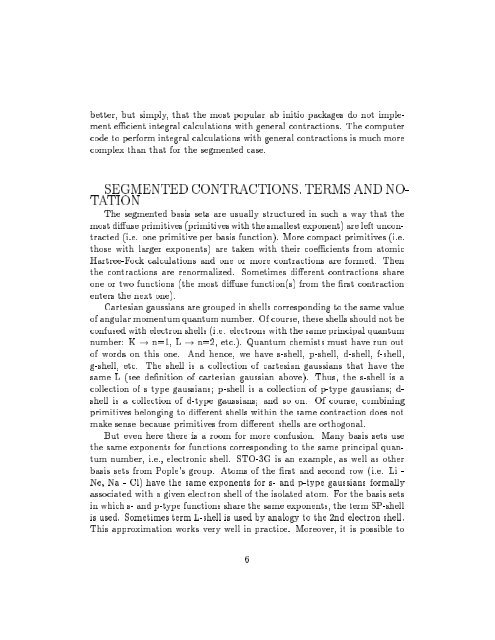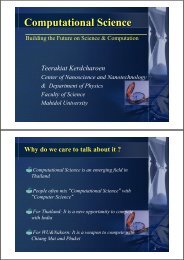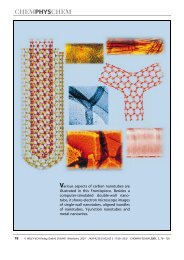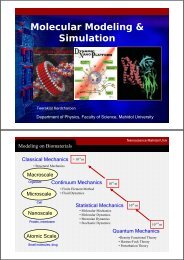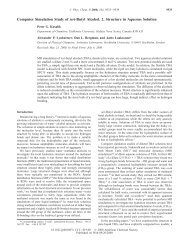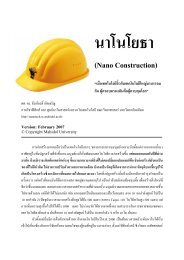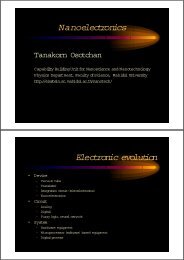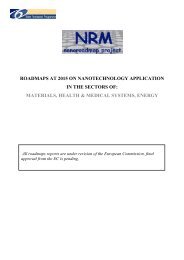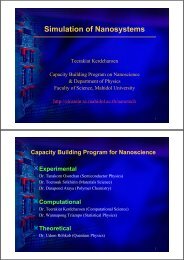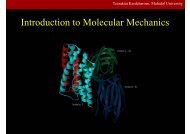SIMPLIFIED INTRODUCTION TO AB INITIO BASIS ... - Nano Mahidol
SIMPLIFIED INTRODUCTION TO AB INITIO BASIS ... - Nano Mahidol
SIMPLIFIED INTRODUCTION TO AB INITIO BASIS ... - Nano Mahidol
You also want an ePaper? Increase the reach of your titles
YUMPU automatically turns print PDFs into web optimized ePapers that Google loves.
etter, but simply, that the most popular ab initio packages do not implementecient integral calculations with general contractions. The computercode to perform integral calculations with general contractions is muchmorecomplex than that for the segmented case.SEGMENTED CONTRACTIONS. TERMS AND NO-TATIONThe segmented basis sets are usually structured in such away that themost diuse primitives (primitives with the smallest exponent) are left uncontracted(i.e. one primitive per basis function). More compact primitives (i.e.those with larger exponents) are taken with their coecients from atomicHartree-Fock calculations and one or more contractions are formed. Thenthe contractions are renormalized. Sometimes dierent contractions shareone or two functions (the most diuse function(s) from the rst contractionenters the next one).Cartesian gaussians are grouped in shells corresponding to the same valueof angular momentum quantum number. Of course, these shells should not beconfused with electron shells (i.e. electrons with the same principal quantumnumber: K ! n=1, L ! n=2, etc.). Quantum chemists must have run outof words on this one. And hence, we have s-shell, p-shell, d-shell, f-shell,g-shell, etc. The shell is a collection of cartesian gaussians that have thesame L (see denition of cartesian gaussian above). Thus, the s-shell is acollection of s type gaussians p-shell is a collection of p-type gaussians d-shell is a collection of d-type gaussians and so on. Of course, combiningprimitives belonging to dierent shells within the same contraction does notmake sense because primitives from dierent shells are orthogonal.But even here there is a room for more confusion. Many basis sets usethe same exponents for functions corresponding to the same principal quantumnumber, i.e., electronic shell. S<strong>TO</strong>-3G is an example, as well as otherbasis sets from Pople's group. Atoms of the rst and second row (i.e. Li -Ne, Na - Cl) have the same exponents for s- and p-type gaussians formallyassociated with a given electron shell of the isolated atom. For the basis setsin which s- and p-type functions share the same exponents, the term SP-shellis used. Sometimes term L-shell is used by analogy to the 2nd electron shell.This approximation works very well in practice. Moreover, it is possible to6


